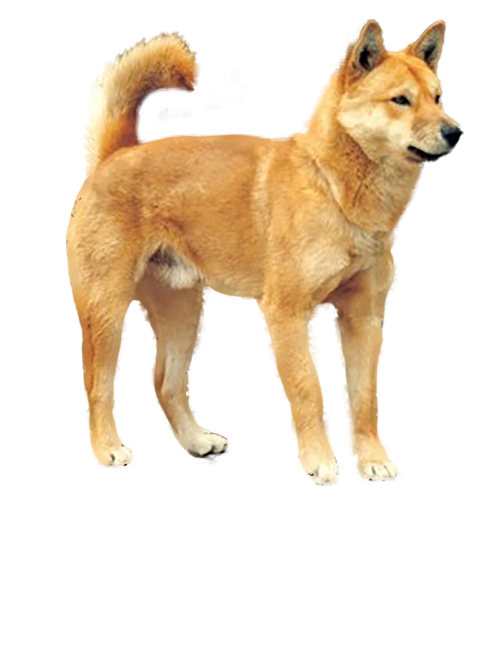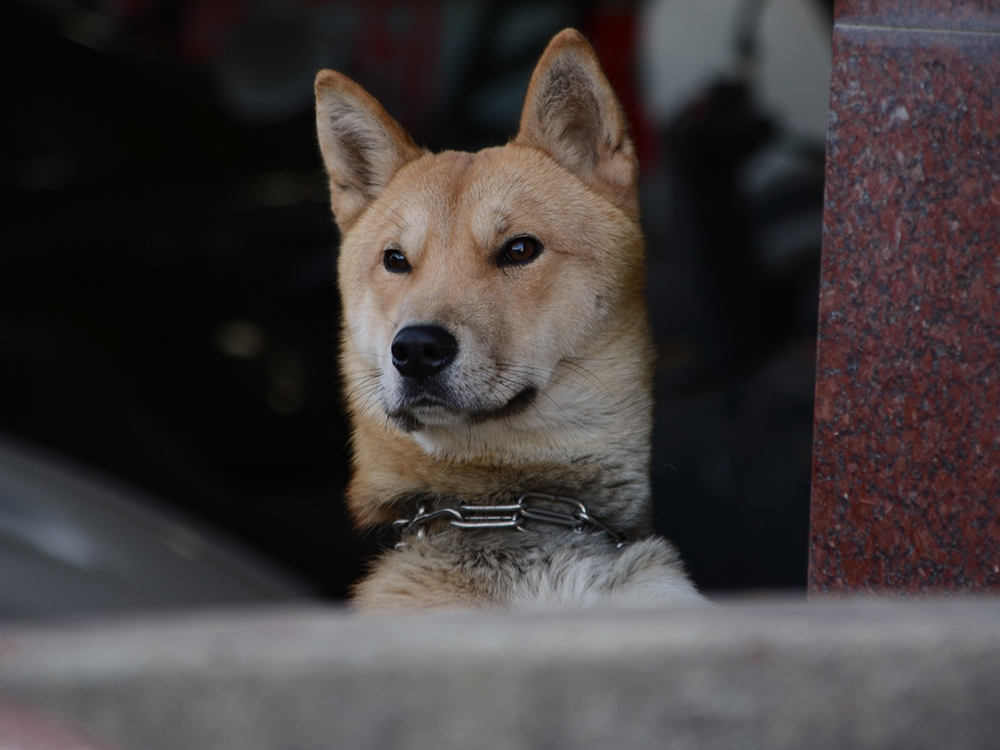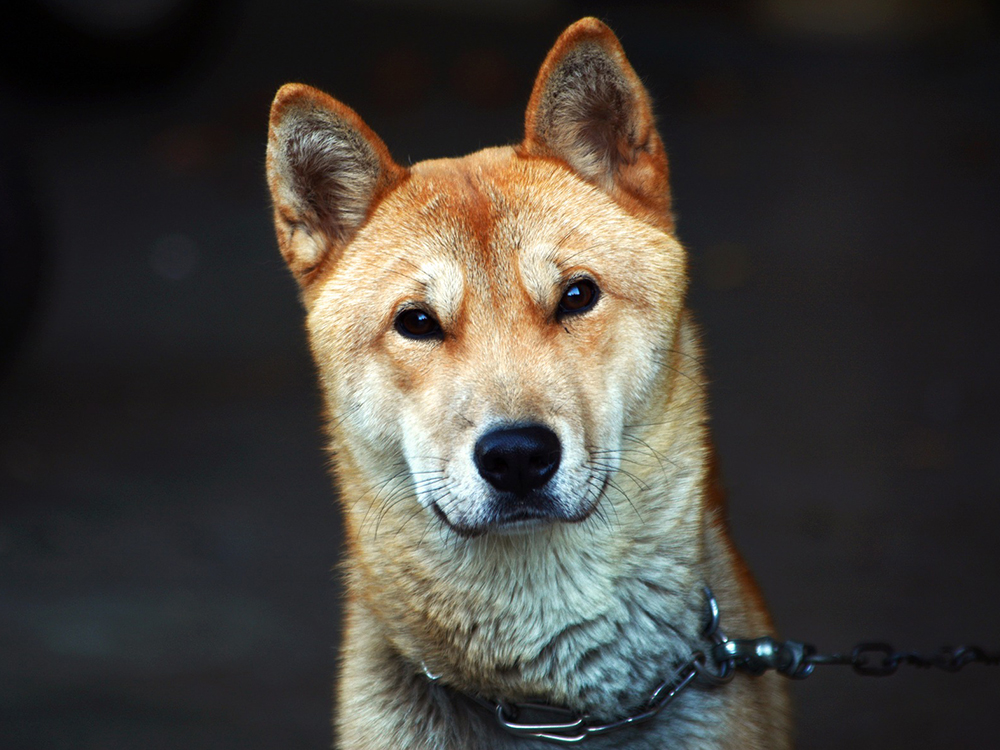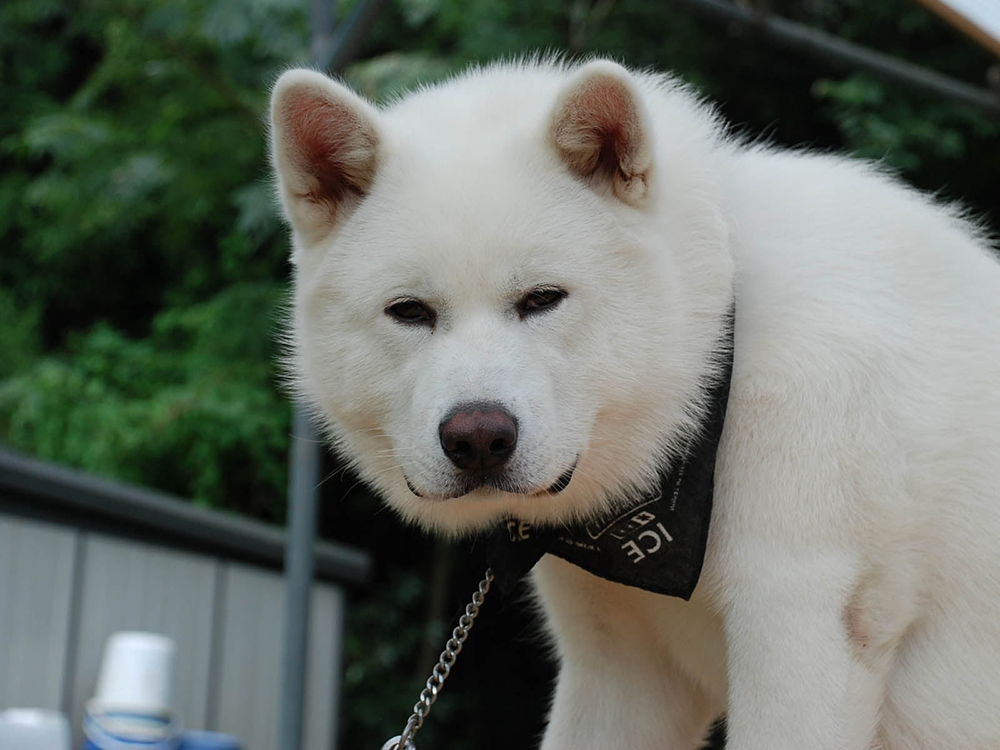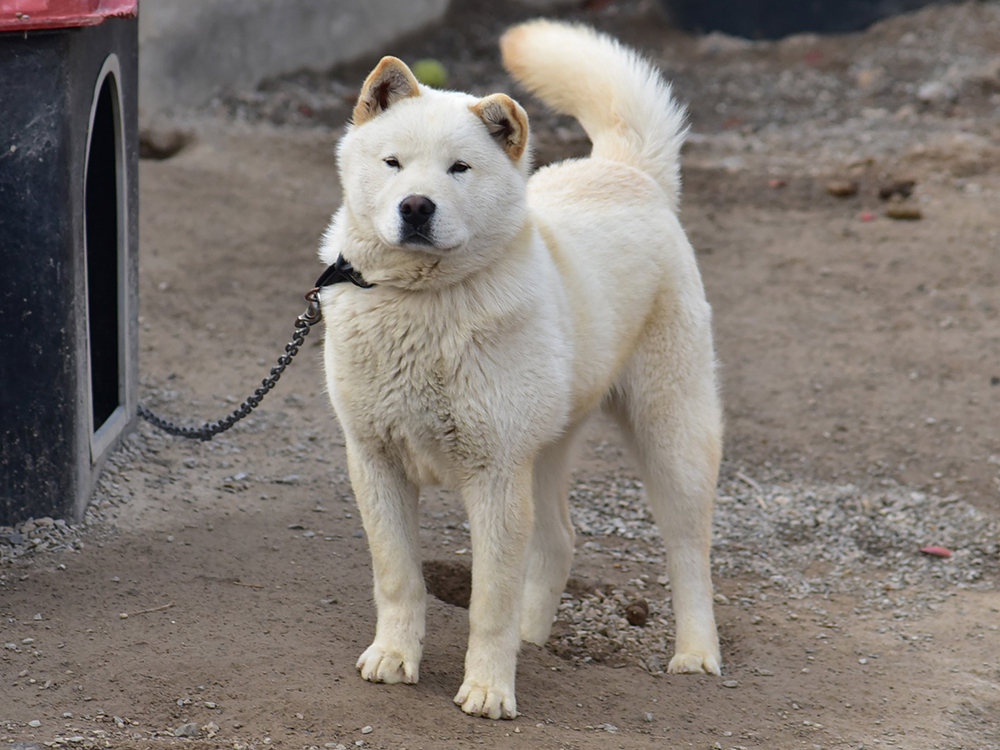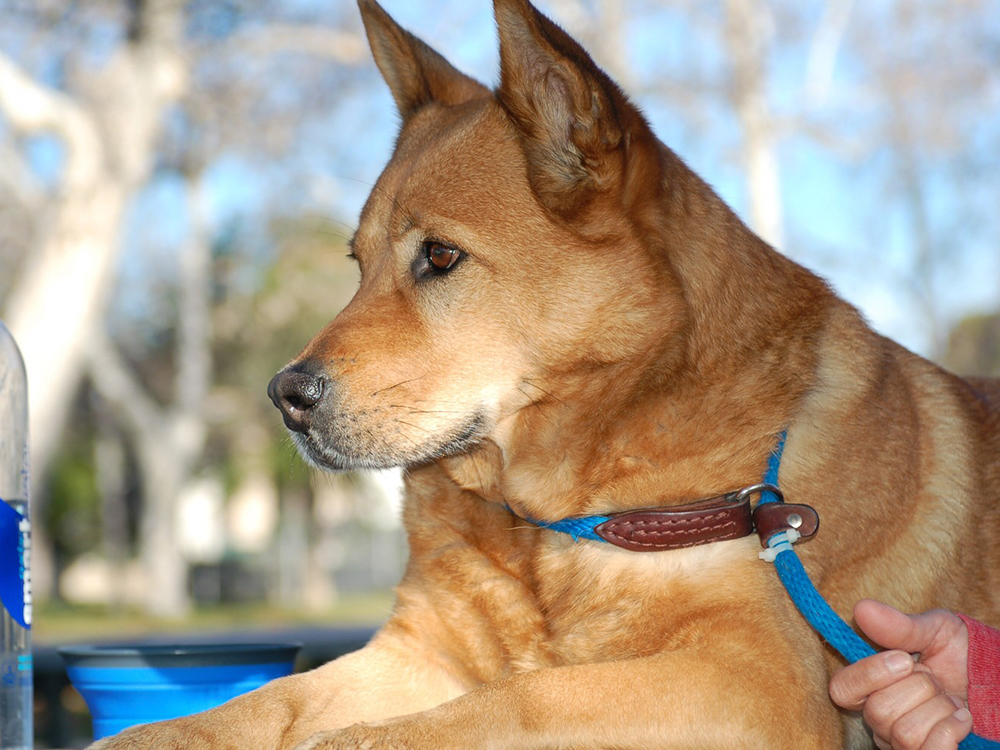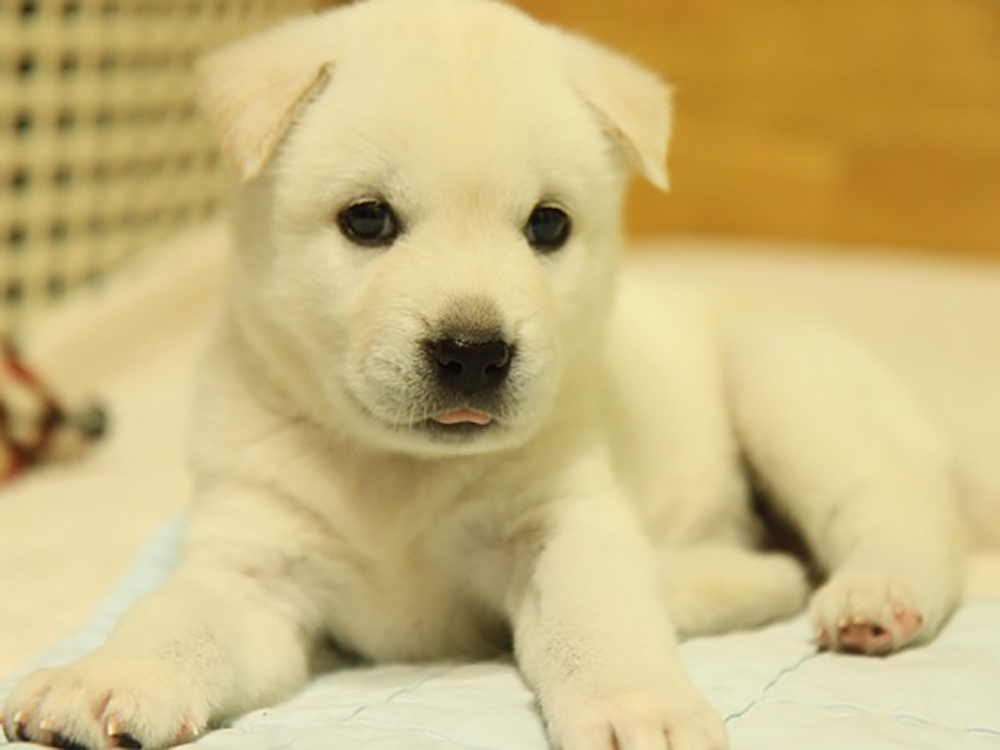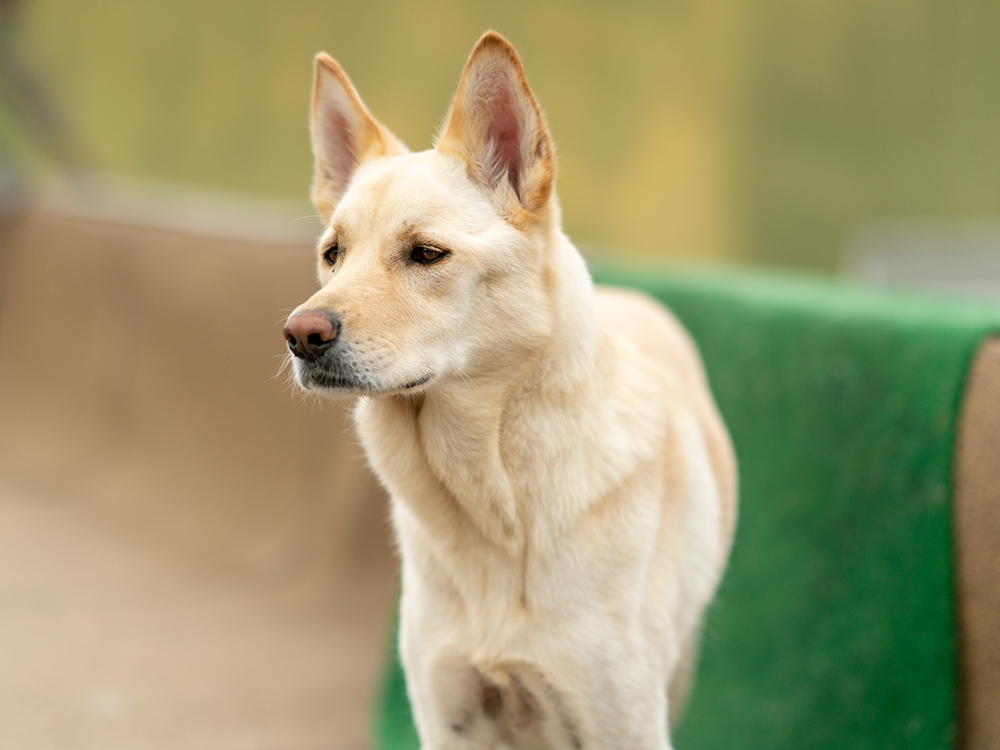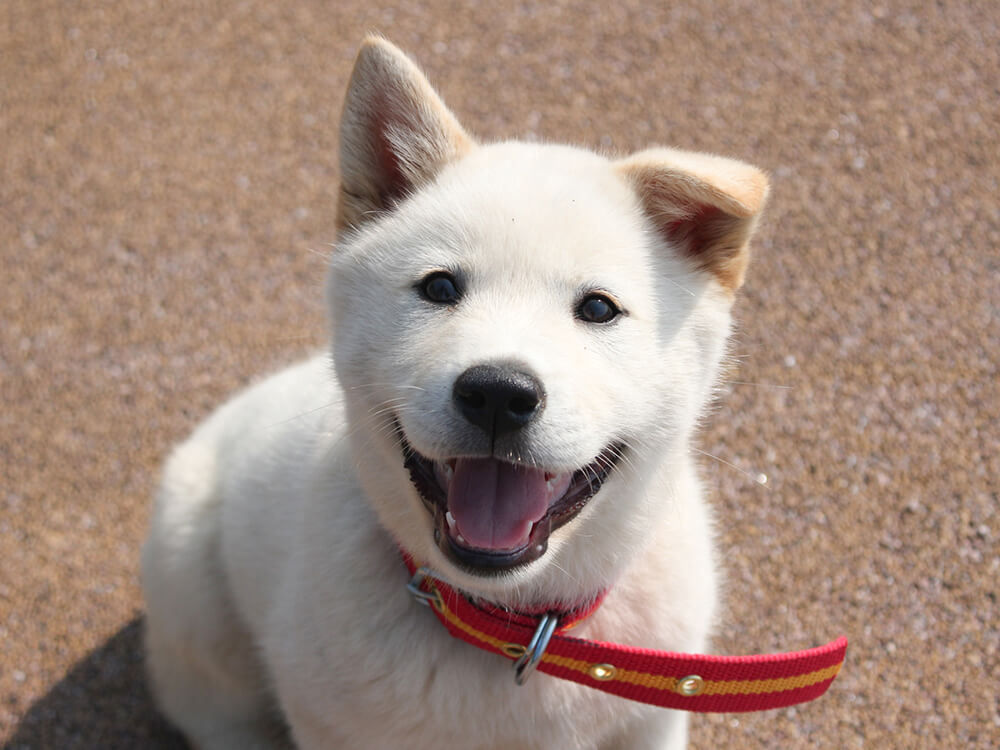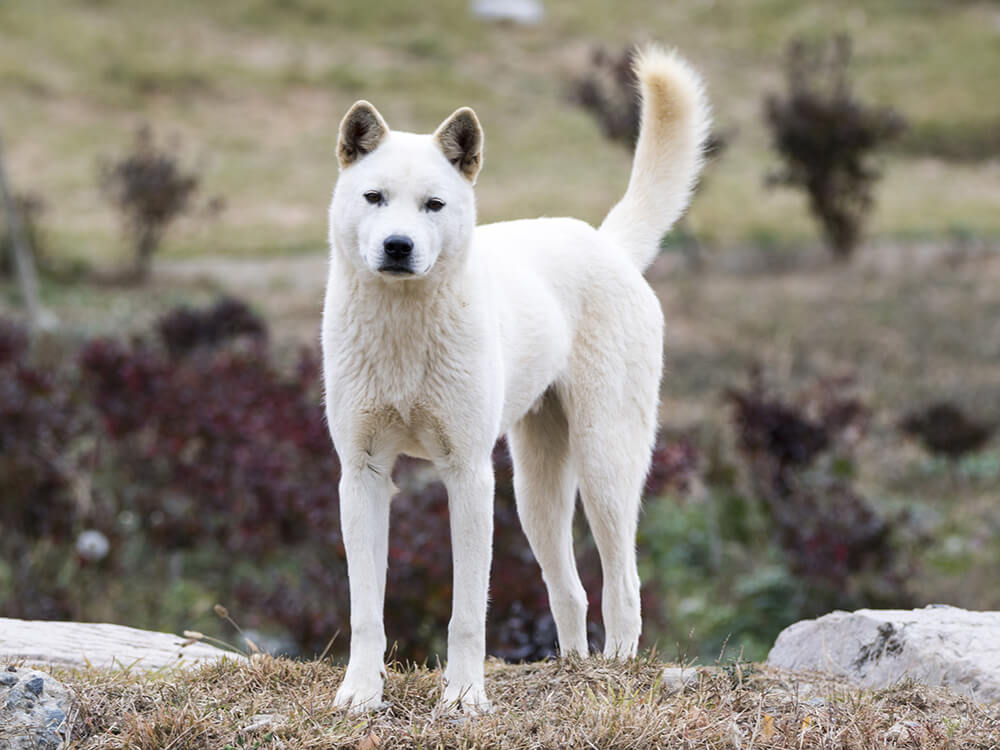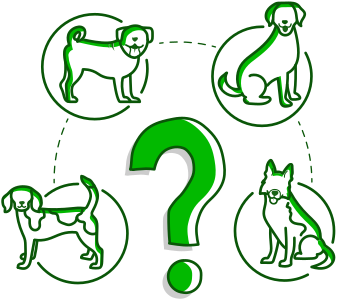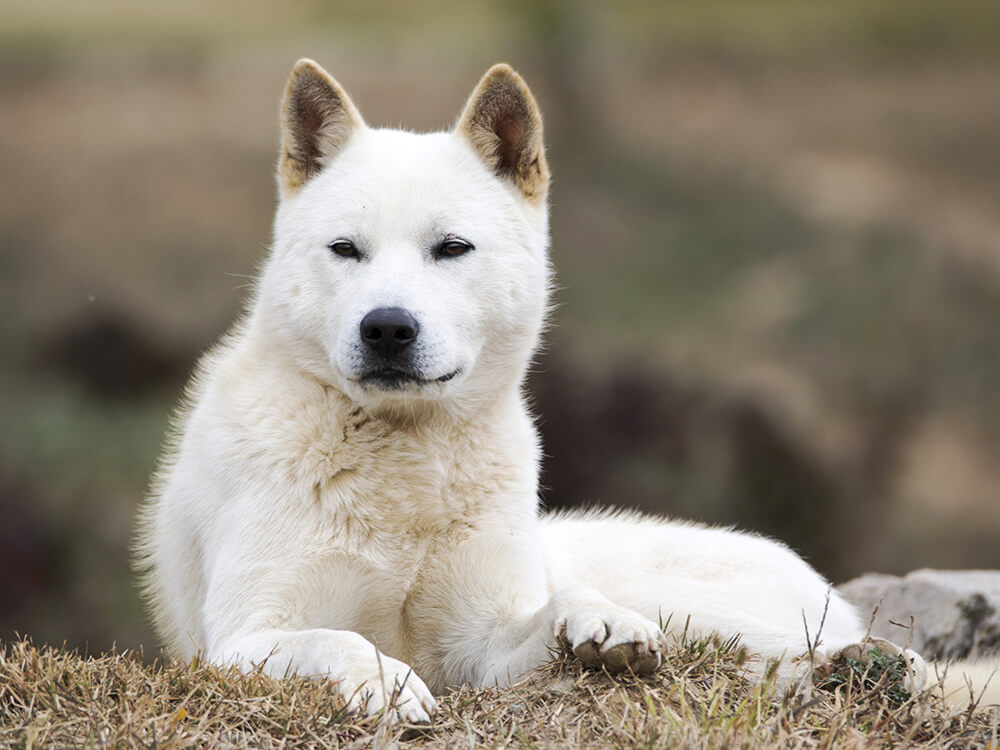
Korean Jindo Breed Pictures
Vital Breed Stats
| Height: | 19 - 26 cm M | 16 - 23 cm F |
| Weight: | 35 - 51 kg M | 24 - 40 kg F |
| Breed Group: | Terrier Dog Group |
| Life Expectancy: | 13 - 15 years |
| KC Registered: | No |
Breed Characteristics
| Size: |  |
| Grooming: |  |
| Exercise Level: |  |
| Trainability: |  |
| Barking Level: |  |
| Good with Children: |  |
| Good with other pets: |  |
| Affectionate: |  |
| Protective: |  |
| Cost to Keep: |  |
Give a thumbs up if you love the Korean Jindo

0
More About the Breed
History
The true origins of the Korean Jindo remain unclear as there are no written records about it. There is no evidence that the breed was created in the Jindo province. Though, the majority of experts believe that the dog has been on the island for at least 1,500 years.
The most popular theory shares that the breed is a descendant of the dogs native to Korea and the dogs brought by the Mongols who invaded the country during 1270 A.D. The Korean king surrendered during the invasion; however, a few of his armies persisted to fight on Jindo Island, which is located in the southern coast of the country. Some dogs tagged along with their masters to the island, where they became isolated. This is where a pure strain of the Korean Jindo was developed.
The breed's major purpose is to chase and capture badgers, boars, deers, and rabbits. He can hunt well in groups and even on his own. It is in the Korean Jindo's nature to go back to his master and lead them back to the prey that he has taken down. His remarkable intelligence, attentiveness, boldness, and extreme dedication for his work and master were greatly appreciated by Koreans. These traits made the Korean Jindo one of the most popular breeds in the country.
A heart-warming tale about a Korean Jindo named Baekgu embodies the breed’s resolute devotion for his owner. In 1991, Baekgu was sold by his owner and transported over 187 miles away from home. After seven months, to the master’s surprise, the dog returned on his doorstep, weak and at the brink of death. A documentary, a storybook, and cartoons about this heart-warming tale were created in honour of Baekgu.
In 1962, the Korean Jindo was appointed as Korea’s fifty-third national treasure. Since the country's law protected the breed as a national monument, it is difficult to export one outside Korea. In 2002, the first Korean Jindo was imported to the UK. In a 2015 statistics made by the Kennel Club, there are approximately 215 Korean Jindos registered with the KC.
Appearance
The Korean Jindo is a medium-sized dog breed with a well-proportioned, equilateral body. His length and height at the withers are about equal to each other. There are three types of Korean Jindo based on their body shape:
- Hudu or Heutgae This type has a slender body that is slightly longer at the withers. This dog’s ears, head, loins, and muzzle are somewhat elongated.
- Tonggol or Gyupgae This type has a deeper chest and a proportionate muscular body.
- Gakgol This type shares the same elongated body like the Hudu and a similar deep chest like the Tonggol.
The breed has almond-shaped eyes that come in various shades of brown. Some dogs may have light brown eyes, but these are not favoured by fanciers. Most of the dogs have pointed muzzles that are black, except for white Jindos, which can have different shades of tan and pink on their noses.
The Korean Jindo sports a short, thick double coat. The topcoat is sleek and smooth, whilst the undercoat is soft and dense. The coat comes in colours of fawn, grey, red, white, yellow, brindle, and black and white.
Grooming
The breed requires fairly low-maintenance. The coat needs brushing once or twice a week with a pin or slicker brush. However, he may require it more often once his shedding period starts.
The Korean Jindo has a wash-and-wear coat, and he grooms himself much like a cat. He also has a strange aversion to water, thus it is best to bathe him sparingly. Only do it when he gets too smelly or grimy.
Keep his nails trimmed regularly to prevent it from excessively growing, which can lead to cracking or splitting. Regular checking and cleaning of his ears is a must to avoid dirt build-up that can cause ear infections. Daily tooth brushing should be a part of his grooming routine, not only to curb doggy breath but also periodontal diseases.
Temperament
The Korean Jindo is very affectionate and loving to his family companions and fiercely protective of them as well. It is the breed’s strong loyalty for his owner that endeared to the people. With that said, he may readily accept a new human companion; however, he will still be greatly attached to his first owner who took care of him.
Children and other pets can make a best friend out of the Korean Jindo. Just make sure that the dog is socialised at an early age to curb his high prey drive and aggression towards dogs of the same sex.
Due to the breed’s deep devotion to his family, it is common for him to be aloof and reserved when meeting new faces. However, he won't be aggressive nor fearful towards them without reason. His perceptiveness and protective nature make him a great watchdog.
Again, ensure that he has been well-socialised during his puppyhood. It will help hone him into an effective guard dog as he will be able to correctly discern who is a threat and who is not.
Intelligence
The Korean Jindo is a social dog and he may easily get lonely and bored if left alone for a long time. He may look for other ways to entertain himself, which can lead to the development of destructive behaviour. Thus, be sure to make time to shower him with love and attention. Training will also help in lessening unwanted behaviour.
A highly intelligent dog, the Korean Jindo is quick to learn new tricks and commands when training. However, although he is smart and eager to please his master, he can be quite stubborn. He would attempt to do things his way, so your calmness and patience are needed during training sessions.
The Korean Jindo requires firm yet gentle handling and consistency like most independent breeds. Be sure to set the rules and adhere to them. Once you have gained his respect, it will be easier for you to train him.
Feeding
A Korean Jindo puppy aged three to six months needs three meals a day. Between the age of six months and one year, change the feeding to twice a day. When the dog reaches adulthood, give him 2.25 to 2.75 cups of food divided into two meals daily.
Note that majority of Korean Jindos are light eaters and tend to be picky with their food. It is thought to be caused by their lifestyle during historic times. When the Korean Jindos were still commonly used as hunting dogs with strong hunting abilities, they used to travel miles and miles a day and only fill their stomachs when necessary. If your dog is a picky eater, you can entice him to eat by heating up his food.
Health
- Hyperthyroidism
- Discoid Lupus Erythematosus
Exercise
Being a hunting dog, the Korean Jindo is very active with tons of energy to burn. Insufficient exercise and mental stimulation will cause this high energy dog to develop destructive behaviours, such as destroying the furniture and jumping out of the fence.
Walk him for at least thirty minutes to an hour daily. Be sure that he is on a lead during your walks since Korean Jindo’s high prey drive might lead him to chase anything that moves.
Games like fetch, Frisbee, and obstacle course are good options to tire him out more. Swimming should be crossed out of the list unless he isn't averse to water, which isn’t typical of most Korean Jindos. Once his need for adrenaline is sated, he will be calm and content just being with his family.
Cost of Ownership
The cost of a Korean Jindo is approximately £630 to £780 depending on the breed’s quality. Dog food expenses may range from £28 to £36 per month. Purchasing initial basic items for your dog may total between £200 and £400.
Vet visits for initial vaccinations will require you to pay £100, whilst each shot of yearly boosters is approximately £50. For every veterinary check-up, it may cost an average of £30. Obtaining pet insurance will charge you around £20 to £30 a month on average if your puppy isn't predisposed to any health condition.
Korean Jindo Breed Highlights
- The Korean Jindo is a fastidious and courageous breed with great loyalty to his family.
- With early socialisation, he can be a good companion for a family with children and other pets.
- Minimal grooming is required unless the shedding season begins.
- He is a highly intelligent dog with an independent streak that requires firm, consistent, yet gentle handling when training.
- Sufficient exercise and mental stimulation are necessary to burn him out.
